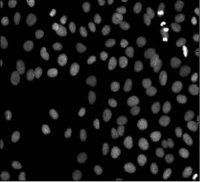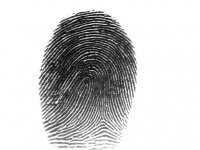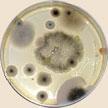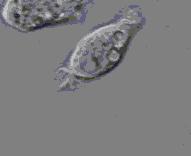This site is devoted to mathematics and its applications. Created and run by Peter Saveliev.
Images appropriate for analysis
From Intelligent Perception
The analysis method used by Pixcavator has certain limitations. The two principal ones are descried below.
1 Dimensionality
This means that the analysis is meaningful only when the image can be interpreted as 2-dimensional.
Examples of appropriate images are:
- cells, cellular tissue, or blood cells under microscope,
- microchips,
- fingerprints and some other biometrics,
- maps and satellite imaging,
- logos, paintings, and other visual work,
- and many many more.
In inappropriate images the third dimension is essential. They may contain:
- occluded objects,
- objects well lit on one side and very dark on the other,
- X-rays.
Mugshots may serve as an example of appropriate images of 3D objects because they are always taken under same angle with similar lighting. For the same reason, applications in machine vision for industrial inspection are also appropriate. Detecting a change in a 3D scene (appearance of a person in a security camera) is also feasible.
Images of 3D objects may contain 2D items: text, scratches, other imperfections of the photograph or the lenses, noise, etc.
2 Proximity
As it often happens, images are shrunk from the original. In this case, a smaller image is acquired via averaging which leads to blurring. There are two possible consequences.
First, it may be impossible to separate objects such as particles. Even though two particles may seem distinct to you, if you zoom in, you might see a thin bridge between them. As a result the software thinks this is the same particle.
Also,
Pixcavator does not treat two objects as one, no matter how close they are. For example, these are inappropriate images:
- a thin scratch on the photo will cut an object in two,
- person's shirt and pants (of different color) will cut him in half,
- the background of an object is uneven and has colors similar to the one of the object.
The simplest way to group two adjacent objects into one or separate two objects connected by a thin "bridge" is via dilation and erosion. Pixcavator has these commands in Tools tab.
At this time these tools exist as a way to modify the image prior to analysis. These "morphological operations" aren't integrated in Pixcavator yet. Nor are watershed algorithm and similar.
Digital discoveries
- Casinos Not On Gamstop
- Non Gamstop Casinos
- Casino Not On Gamstop
- Casino Not On Gamstop
- Non Gamstop Casinos UK
- Casino Sites Not On Gamstop
- Siti Non Aams
- Casino Online Non Aams
- Non Gamstop Casinos UK
- UK Casino Not On Gamstop
- Non Gamstop Casino UK
- UK Casinos Not On Gamstop
- UK Casino Not On Gamstop
- Non Gamstop Casino UK
- Non Gamstop Casinos
- Non Gamstop Casino Sites UK
- Best Non Gamstop Casinos
- Casino Sites Not On Gamstop
- Casino En Ligne Fiable
- UK Online Casinos Not On Gamstop
- Online Betting Sites UK
- Meilleur Site Casino En Ligne
- Migliori Casino Non Aams
- Best Non Gamstop Casino
- Crypto Casinos
- Casino En Ligne Belgique Liste
- Meilleur Site Casino En Ligne Belgique
- Bookmaker Non Aams
- онлайн казино с хорошей отдачей
- スマホ カジノ 稼ぐ
- Trang Web Cá độ Bóng đá Của Việt Nam




